Two dimensional representations of 360x180 degree images or videoWritten by Paul Bourke19 October 2018
Sindhi translation by Samuel Badree.
The question often arises as to what is the best way to represent a 360x180 image or video capture on a 2D screen. Historically this has been the domain of cartographers attempting to produce representations of the Earths surface, the key being the definition of "best". Fundamental topology dictates that such a 3D surface cannot be flattened onto a 2D plane without stretching (what is generally called warping or distortion) and cuts. The standard approach is known as an equirectangular projection, or sometimes spherical projection, it is presented below in what will be the example 360x180 image used in the rest of this document. It has one cut, the left edge connects with the right edge. It also has two discontinuities, one at each pole where a single point is spread out along the top and bottom edge. It is this stretching that gives rise to the apparent distortion towards the top and bottom edges. Note the word "apparent" is used, there is no actual distortion since the image projection has a precise mathematical definition, the distortion only occurs because we expect a single type of apparent distortion, namely that which occurs with perspective projections. 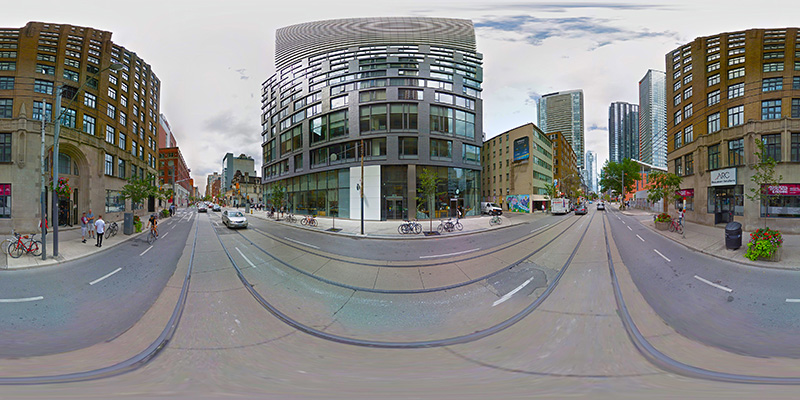
One solution to the issue at the poles is to ignore them, for example to crop the equirectangular. Alternatively one may create a cylindrical panorama (Mercator Projection) as shown below. A cylindrical panorama preserves the 360 degrees lines of longitude horizontally but the vertical axis adopts a standard perspective relationship, the projection onto a cylinder. This however means that the vertical field of view of the cylindrical panorama is limited, above 130 degrees it becomes an increasingly inefficient representation and the upper and lower portions becomes increasingly stretched. The example below has 100 degrees of vertical FOV, so 80 degrees are missing. 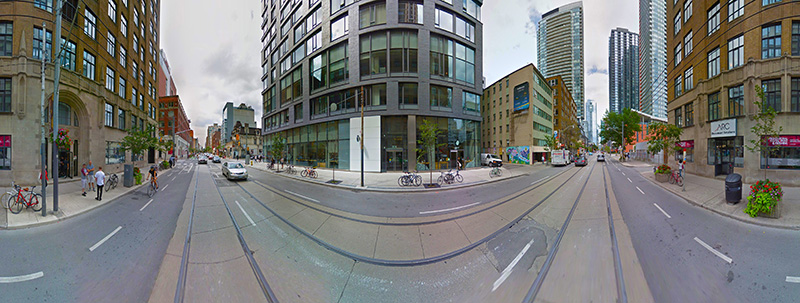
Another partial representation is a stereographic projection, also known as "little planet" projections and is one of a number of possible azimuthal projections, in this case a stereographic azimuthal projection. Like the cylindrical panorama it cannot represent the whole 360 degrees of longitude and 180 degrees of latitude. A gnomonic azimuthal projection is even more limiting and can represent only half the full sphere. 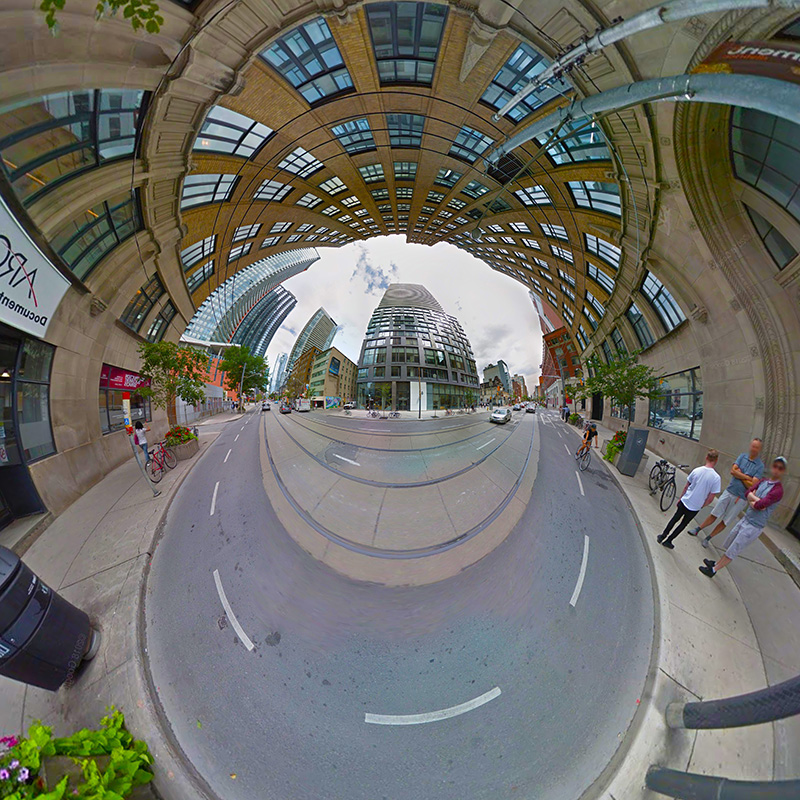
A fisheye projection, mathematically, is not limited to the field of view of physical fisheye lenses. The following is a 360 degree fisheye, the first example here after the equirectangular where the entire 360x180 degrees are represented on a plane. It has one singularity, the point immediately behind the center of the image which is spread out around the circumference of the fisheye circle. As with the north and south pole of the equirectangular one expects the images to appear increasingly stretched as one approaches these singularities. 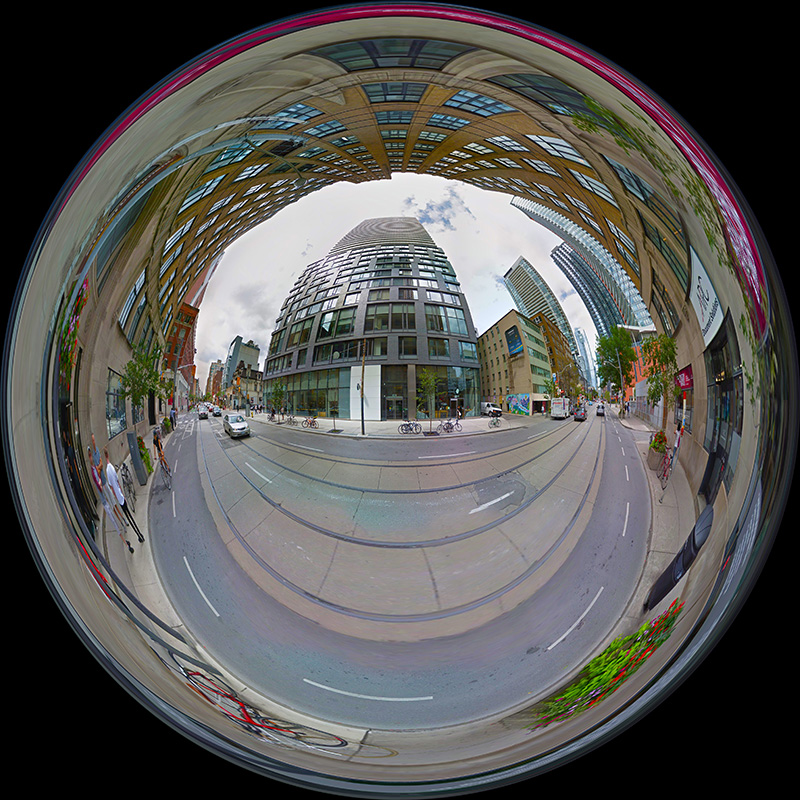
A common representation goes by the name of cube maps, these comprise of six 90 degree by 90 degree perspective projections arranged as the faces of a cube. The cube is then "unfolded" to be laid flat on a 2D plane, example shown below. While each face of the cube is a standard pinhole style perspective projection, the resulting unfolded cube has 6 discontinuities and 7 cuts. While a well established means of storing 360x180 images, it is problematic to watch video due mainly to the cuts, moving objects appear to jump from one location to distant locations. 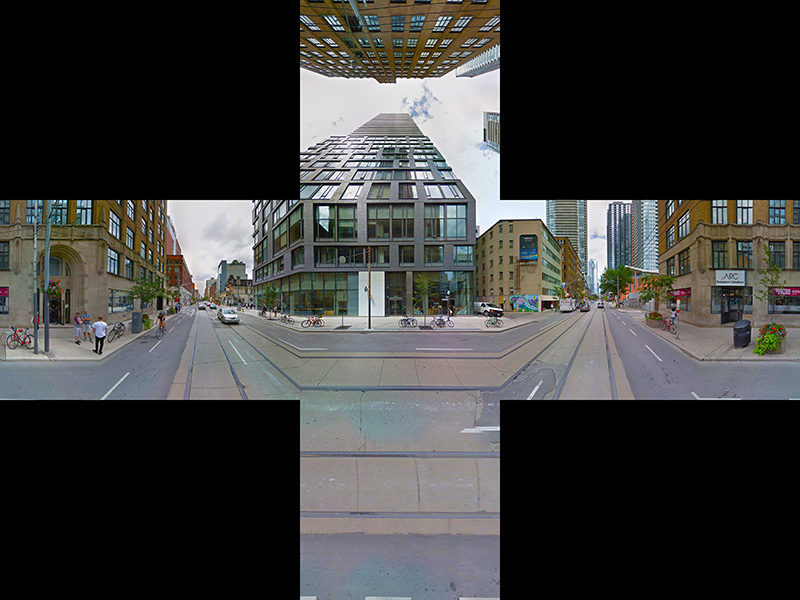
The full 360x180 degree field of view can be represented by two fisheye images laid side by side as shown below. While there are no discontinuities, and we are somewhat familiar with the apparent distortion in a fisheye image, the result does have a cut that extends all the way around the circumference of the fisheye circle. Objects that move along the -90 and 90 degree seam split apart. 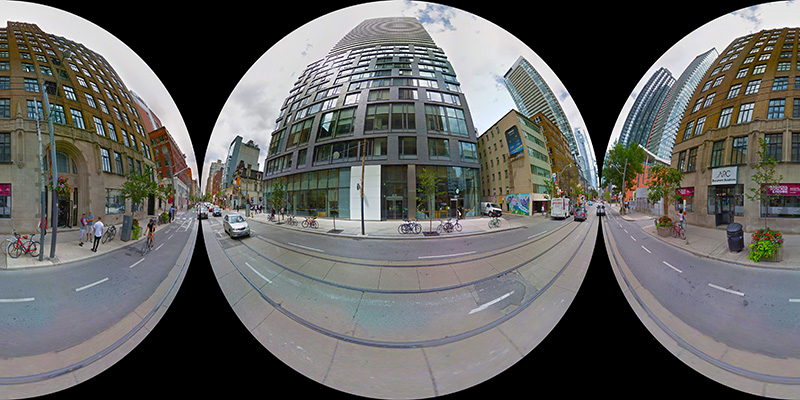
Another azimuthal projection is an orthographic one where, unlike the stereographic where rays are sourced from a point, rays are from infinity. So similar to the two fisheye halves above, an orthographic projection of the two hemispheres is just a parallel projection. As such towards the rim the representation becomes increasingly compressed and inefficient. From cartography there are a whole slew of possible map projections. For example the Hammer projection shown next encapsulates the entire visible field of view. It was designed to provide an equal area representation of the Earths surface. There is a wrapping type cut around the entire circumference of the ellipse into which the projection lies, with apparent distortion towards that circumference. 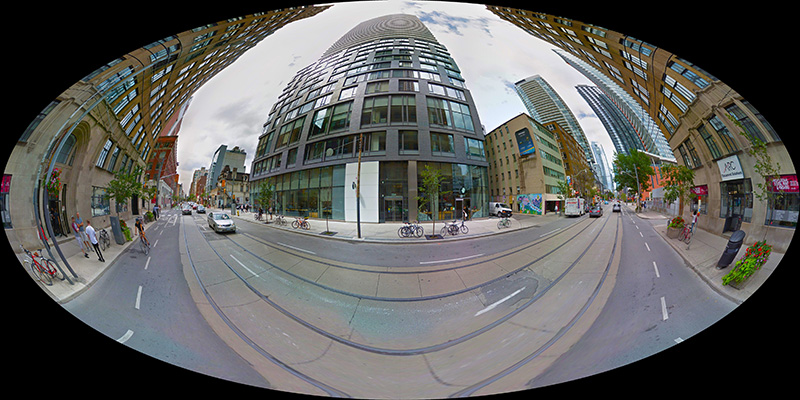
The Mollweide projection is another equal angular projection, often just known as the elliptical projection. 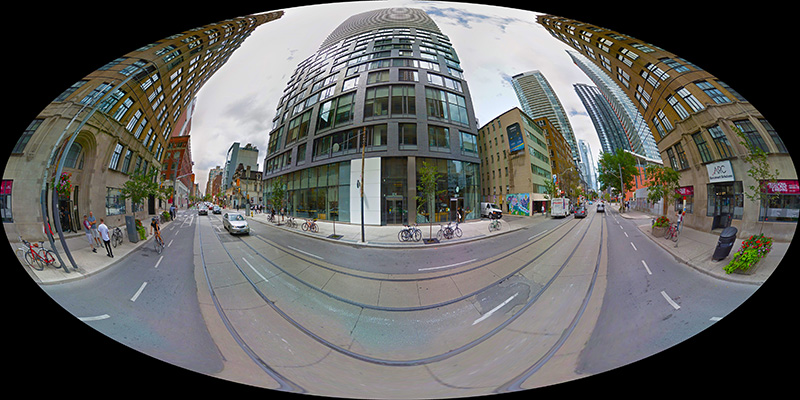
Stereographic (little planet) projection and extreme fisheye projection from the EPFL tokamak.
|

